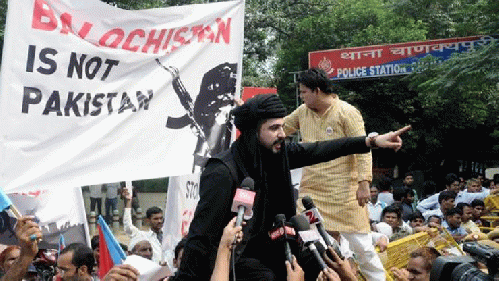What Does Pakistan's Balochistan and China's Xinjiang Have in Common?
Balochistan and Xinjiang both appear to be suffering from separatist movements, terrorism, and political destabilization. The common factor is clearly US backing behind both separatist movements but what is the common denominator that has attracted US attention in the first place? Both Xinjiang and Balochistan are settings for massive Chinese-led infrastructure and trade initiatives. Western publications like the Business Insider note the importance Xinjiang holds in terms of China's One Belt, One Road (OBOR) initiative.
*
Destabilizing Pakistan: Bookending Washington's China PolicyMuch is being said of US activities aimed at China. Recent protests in Hong Kong together with a US-led propaganda campaign aimed at Beijing's attempts to quell a growing terrorist threat in Xinjiang are aimed at pressuring the nation to fall back into line within Washington's enduring unipolar international order.
The latter of these two campaigns in particular claims of Chinese authoritarianism as Beijing attempts to neutralize US-backed separatists and terrorists in Xinjiang has also been spun as China "targeting Muslims."
This ignores the fact that one of China's closest and oldest allies in Eurasia is Pakistan a Muslim-majority nation. It also ignores the fact that in Pakistan, the US is playing the same game aimed at cultivating violent extremism, separatism, violence, division, and even the dissolution of Pakistan's current borders.
Balochistan the other Xinjiang
While all the focus has been directed by the Western media on Xinjiang and a supposed "anti-Muslim crackdown" in the region, Pakistan faces the same problem in its southwestern province of Balochistan. In Pakistan attempts by the government to root out violent separatists surely is not "anti-Muslim."
In Balochistan, the US agencies involved in fanning the flames of separatism and violence instead portray Islamabad and the Pakistani military's efforts to restore order as simply trampling "human rights."
US interference in Balochistan is just as extensive as it is in China's Xinjiang.
Despite the recent move by Washington to list the armed Balochistan Liberation Army (BLA) as a terrorist organization Islamabad has long accused Washington of funding and arming it along with segments of the Indian government aligned with US interests.
The fact that otherwise ignored activities by Balochistan separatists are covered by certain Indian newspapers even as recently as this year seems to give credence to these accusations. NDTV's article, "Pro-Balochistan Slogans Raised During Imran Khan's Address In US," and India Today's article, "16 EU Members of Parliament write letter to Trump to intervene in Balochistan," are just two such examples.
US support is much easier to track down.
US-based Stanford University's Mapping Militant Organizations project admits that the BLA receives much of its financial aid from the Balochi diaspora. The project's profile on the Balochistan Liberation Army notes:
Due to high community support for autonomy and independence from people of the Balochistan, many analysts suspect that a large amount of the BLA's income and weapons supply come from donations from the Balochi people. Balochi leaders have also claimed that financial contributions from the Balochi diaspora make it possible to procure arms and ammunition through the black market.
Thus, even if the US is not directly arming and funding the BLA, it is openly supporting pro-separatists among the Balochi diaspora who even Stanford University experts admit are in turn funding the BLA's terrorism.
The US move to designate the BLA as a foreign terrorist organization holds little meaning. The BLA will find itself beside organizations like Jabhat Al Nusra in Syria which is all but openly funded and armed by the United States and a large cross-section of Washington's closest European and Arab allies.
Arming militants is only half of the overall strategy seeking to destabilize Pakistan. Subverting national institutions and replacing them with those interlocking with US special interests is the other half.
(Note: You can view every article as one long page if you sign up as an Advocate Member, or higher).






